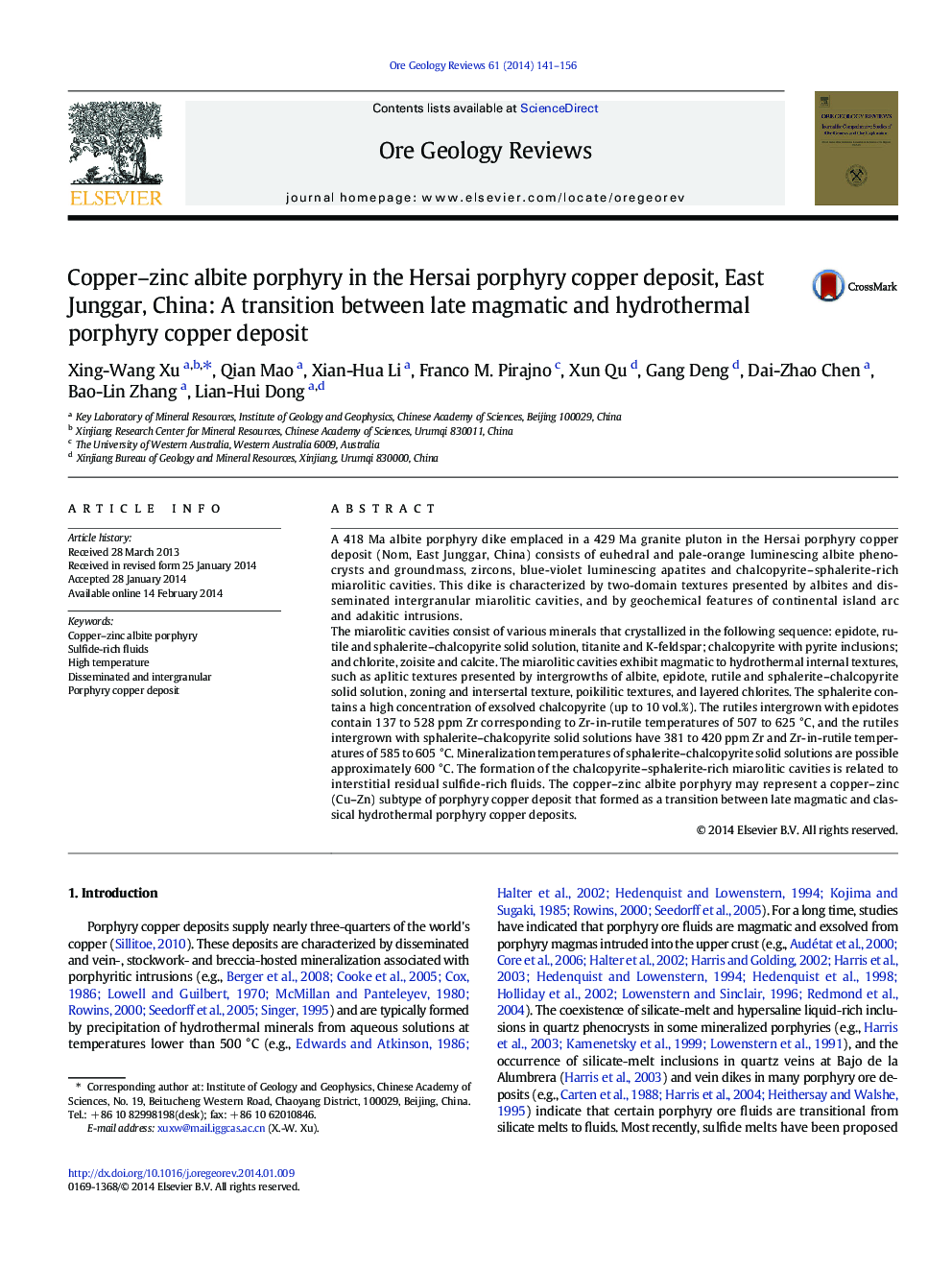| کد مقاله | کد نشریه | سال انتشار | مقاله انگلیسی | نسخه تمام متن |
|---|---|---|---|---|
| 4697364 | 1637242 | 2014 | 16 صفحه PDF | دانلود رایگان |

A 418 Ma albite porphyry dike emplaced in a 429 Ma granite pluton in the Hersai porphyry copper deposit (Nom, East Junggar, China) consists of euhedral and pale-orange luminescing albite phenocrysts and groundmass, zircons, blue-violet luminescing apatites and chalcopyrite–sphalerite-rich miarolitic cavities. This dike is characterized by two-domain textures presented by albites and disseminated intergranular miarolitic cavities, and by geochemical features of continental island arc and adakitic intrusions.The miarolitic cavities consist of various minerals that crystallized in the following sequence: epidote, rutile and sphalerite–chalcopyrite solid solution, titanite and K-feldspar; chalcopyrite with pyrite inclusions; and chlorite, zoisite and calcite. The miarolitic cavities exhibit magmatic to hydrothermal internal textures, such as aplitic textures presented by intergrowths of albite, epidote, rutile and sphalerite–chalcopyrite solid solution, zoning and intersertal texture, poikilitic textures, and layered chlorites. The sphalerite contains a high concentration of exsolved chalcopyrite (up to 10 vol.%). The rutiles intergrown with epidotes contain 137 to 528 ppm Zr corresponding to Zr-in-rutile temperatures of 507 to 625 °C, and the rutiles intergrown with sphalerite–chalcopyrite solid solutions have 381 to 420 ppm Zr and Zr-in-rutile temperatures of 585 to 605 °C. Mineralization temperatures of sphalerite–chalcopyrite solid solutions are possible approximately 600 °C. The formation of the chalcopyrite–sphalerite-rich miarolitic cavities is related to interstitial residual sulfide-rich fluids. The copper–zinc albite porphyry may represent a copper–zinc (Cu–Zn) subtype of porphyry copper deposit that formed as a transition between late magmatic and classical hydrothermal porphyry copper deposits.
Journal: Ore Geology Reviews - Volume 61, September 2014, Pages 141–156